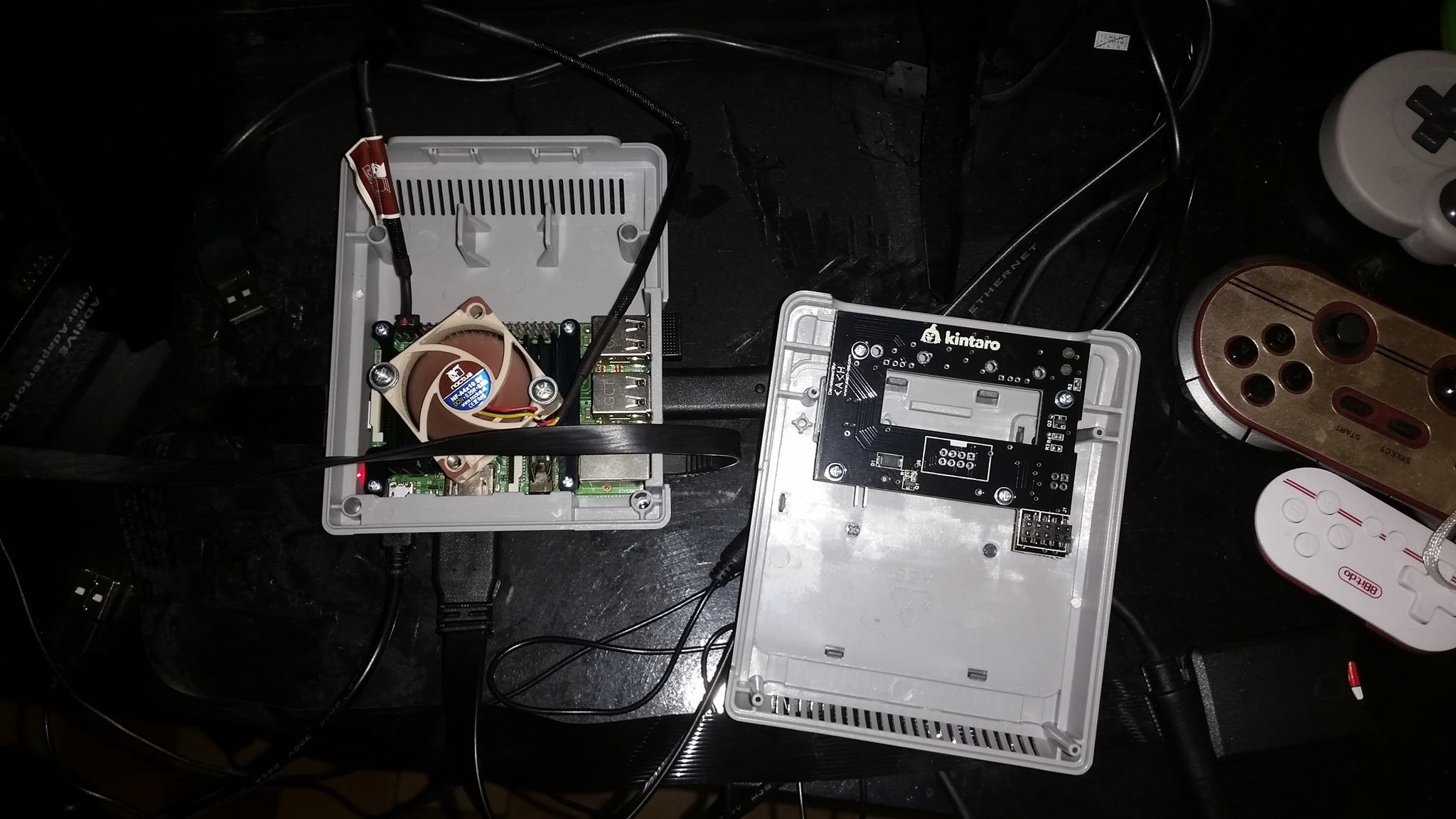Salut,
Ca y est le dev de Kintaro a sorti sa nouvelle version du script pour leur boitier qui prend en charge le ventilateur via hysterisis. on le trouve ici :
https://github.com/MichaelKirsch/Kintaro-Recalbox
il y a du grand changement dans le script :
#!/usr/bin/python -u
#Copyright 2017 Michael Kirsch
try:
import time
import os
import RPi.GPIO as GPIO
import subprocess
except ImportError:
raise ImportError('spidev or gpio not installed')
class SNES:
def __init__(self):
#GPIOs
self.led_pin=7
self.fan_pin=8
self.reset_pin=3
self.power_pin=5
self.check_pin=10
#vars
self.fan_hysteresis = 5
self.fan_starttemp = 60
self.debounce_time = 0.1
#path
self.temp_command = 'vcgencmd measure_temp'
#Set the GPIOs
GPIO.setmode(GPIO.BOARD) # Use the same layout as the pins
GPIO.setwarnings(False)
GPIO.setup(self.led_pin, GPIO.OUT) # LED Output
GPIO.setup(self.fan_pin, GPIO.OUT) # FAN Output
GPIO.setup(self.power_pin, GPIO.IN) # set pin as input
GPIO.setup(self.reset_pin, GPIO.IN,
pull_up_down=GPIO.PUD_UP) # set pin as input and switch on internal pull up resistor
GPIO.setup(self.check_pin, GPIO.IN, pull_up_down=GPIO.PUD_UP)
def power_interrupt(self, channel):
time.sleep(self.debounce_time) # debounce
if GPIO.input(self.power_pin) == GPIO.HIGH and GPIO.input(
self.check_pin) == GPIO.LOW: # shutdown function if the powerswitch is toggled
self.led(0) # led and fan off
self.fan(0)
os.system("shutdown -h now")
def reset_interrupt(self, channel):
if GPIO.input(self.reset_pin) == GPIO.LOW: # reset function
time.sleep(self.debounce_time) # debounce time
while GPIO.input(self.reset_pin) == GPIO.LOW: # while the button is hold the counter counts up
self.blink(15, 0.1)
os.system("reboot")
def pcb_interrupt(self, channel):
GPIO.cleanup() # when the pcb is pulled clean all the used GPIO pins
def temp(self): #returns the gpu temoperature
res = os.popen(self.temp_command).readline()
return float((res.replace("temp=", "").replace("'C\n", "")))
def led(self,status): #toggle the led on of off
if status == 0: #the led is inverted
GPIO.output(self.led_pin, GPIO.LOW)
if status == 1:
GPIO.output(self.led_pin, GPIO.HIGH)
def blink(self,amount,interval): #blink the led
for x in range(amount):
self.led(1)
time.sleep(interval)
self.led(0)
time.sleep(interval)
def fan(self,status): #switch the fan on or off
if status == 1:
GPIO.output(self.fan_pin, GPIO.HIGH)
if status == 0:
GPIO.output(self.fan_pin, GPIO.LOW)
def fancontrol(self,hysteresis,starttemp): #read the temp and have a buildin hysteresis
if self.temp() > starttemp:
self.fan(1)
if self.temp() < starttemp-hysteresis:
self.fan(0)
def check_fan(self):
self.fancontrol(self.fan_hysteresis,self.fan_starttemp) # fan starts at 60 degrees and has a 5 degree hysteresis
def attach_interrupts(self):
if GPIO.input(self.check_pin) == GPIO.LOW: # check if there is an pcb and if so attach the interrupts
GPIO.add_event_detect(self.check_pin, GPIO.RISING,callback=self.pcb_interrupt) # if not the interrupt gets attached
if GPIO.input(self.power_pin) == GPIO.HIGH: #when the system gets startet in the on position it gets shutdown
os.system("shutdown -h now")
else:
self.led(1)
GPIO.add_event_detect(self.reset_pin, GPIO.FALLING, callback=self.reset_interrupt)
GPIO.add_event_detect(self.power_pin, GPIO.RISING, callback=self.power_interrupt)
else: #no pcb attached so lets exit
GPIO.cleanup()
exit()
snes = SNES()
snes.attach_interrupts()
while True:
time.sleep(5)
snes.led(1)
snes.check_fan()

